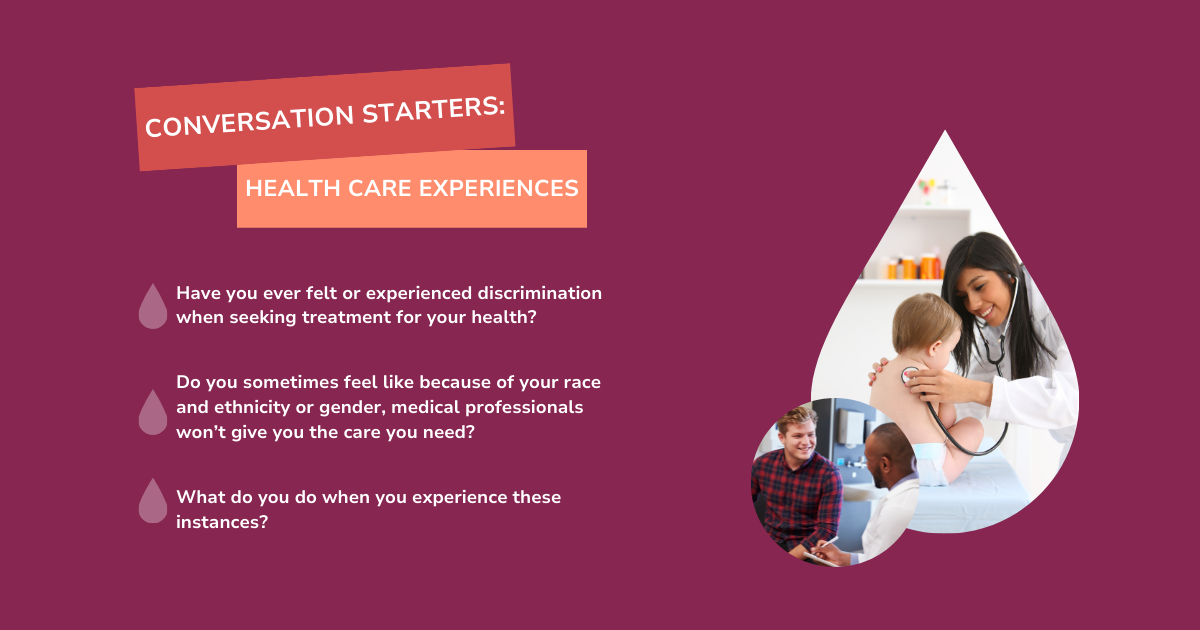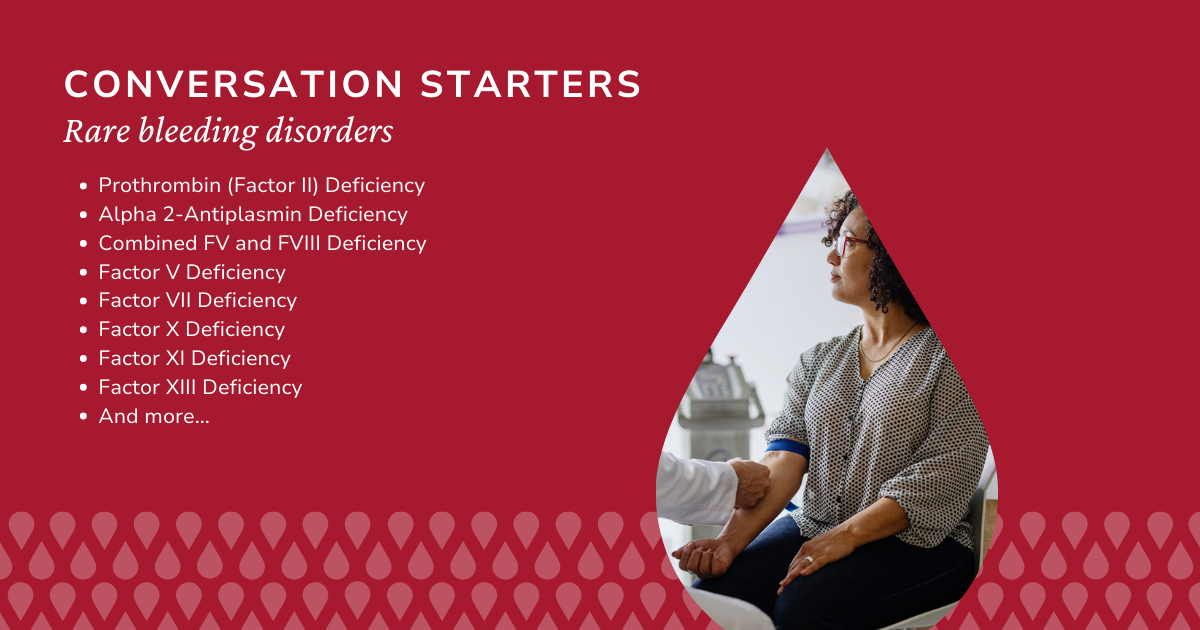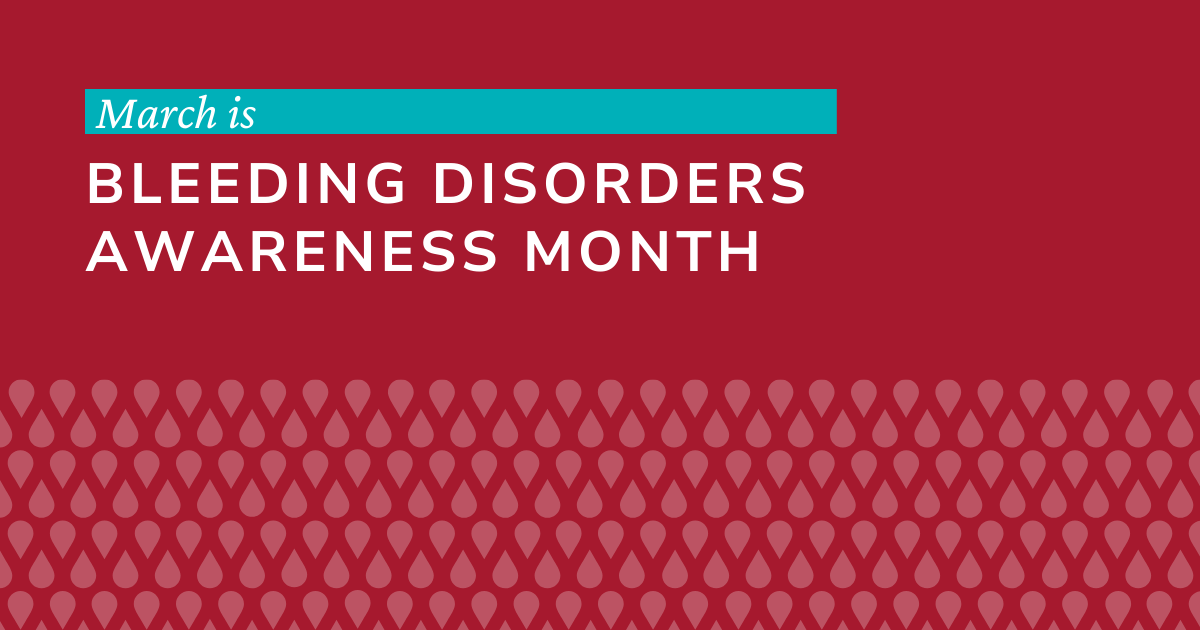Each March, the community calls attention to inheritable blood and bleeding disorders during Bleeding Disorders Awareness Month. This month lets patients and families with hemophilia, von Willebrand disease, rare factor disorders, and more, share their lives, stories, struggles, and successes.
Explore this page for more information on getting involved this #BleedingDisordersAwarenessMonth, and how you can help start the conversation around inheritable blood and bleeding disorders.
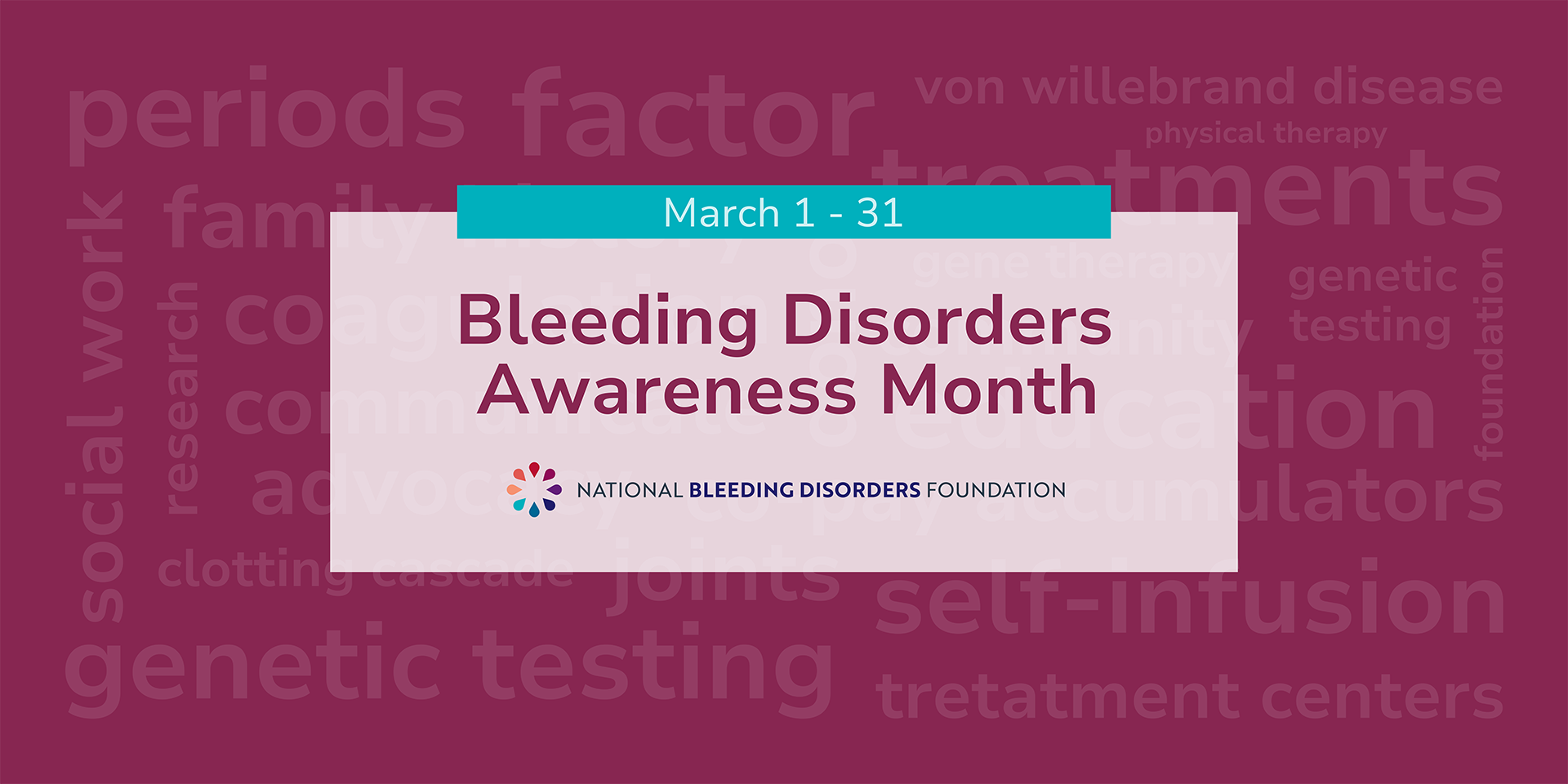
You're invited to 'Start the Conversation' around issues and experiences related to inheritable blood or bleeding disorders. Whether your concerns or interests revolve around research, treatments, women’s health, mental health, medical marijuana, or other topics, you can play a role in starting and elevating these important conversations. Read on for more information on how to get involved.
Bleeding Disorders Awareness Month has been observed each March since 2016, after being designated as a national health observance by the U.S. Department of Health and Human Services. BDAM aims to increase awareness of inheritable blood and bleeding disorders among the public, as well as bring them to the attention of policymakers, public authorities, industry representatives, scientists, and health professionals.
Prior to BDAM, March was known “Hemophilia Awareness Month” – a designation confirmed by President Ronald Reagan in March 1986.
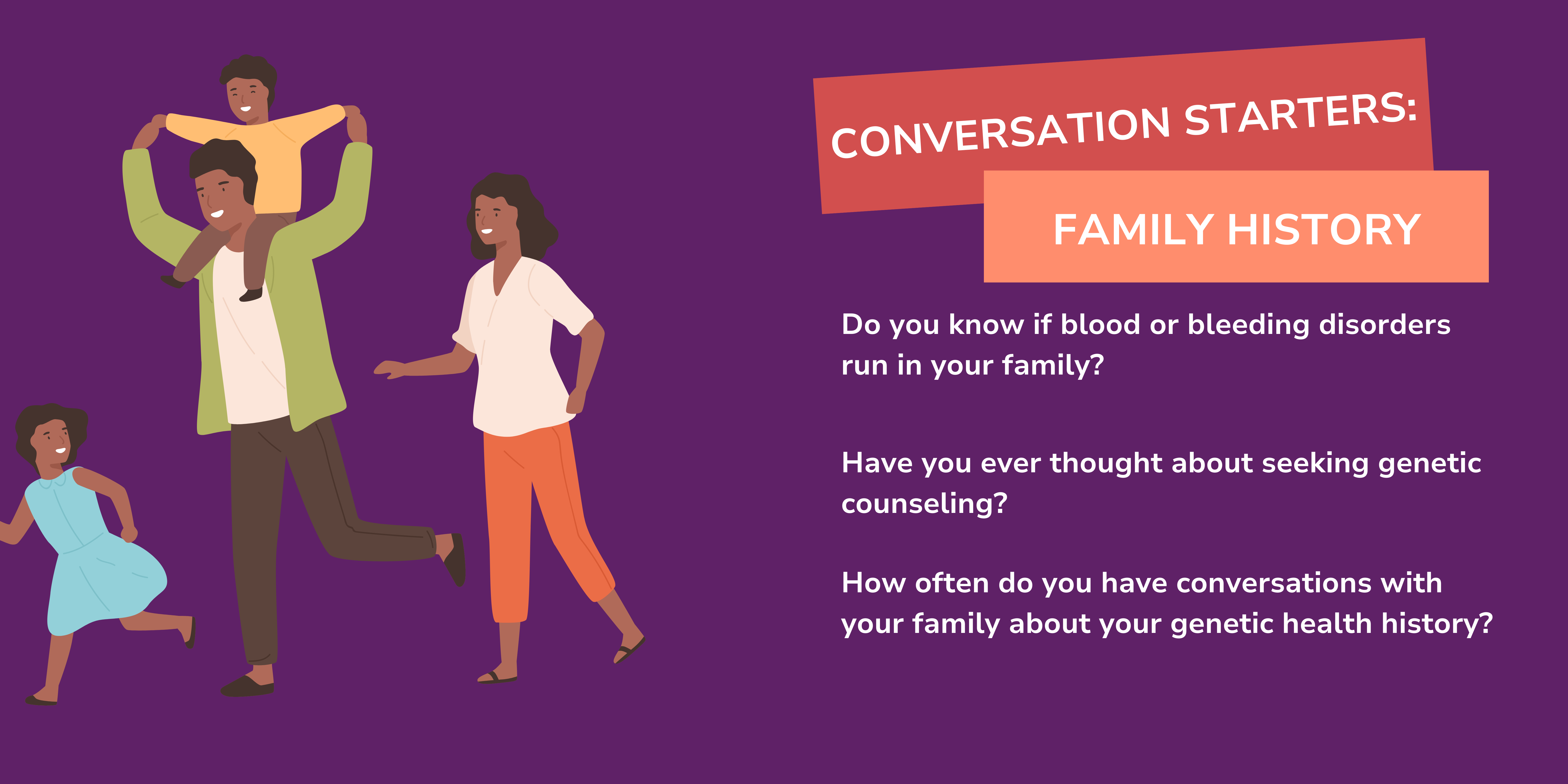
Blood and Bleeding Disorders FAQs
According to the U.S. Centers for Disease Control, there are about 3 million people nationwide who are affected by bleeding disorders.
These disorders share the inability to form a proper blood clot. The body produces 13 clotting factors. If any of them are defective or deficient, blood clotting is affected; a mild, moderate, or severe bleeding disorder can result.
Between 30,000 and 33,000 people in the U.S. are thought to live with hemophilia. The most common bleeding disorder is von Willebrand disease (VWD), which affects about 1 in every 100 people. Both hemophilia and VWD are classified as rare diseases.
Symptoms can include extended bleeding after injury, surgery, trauma, or menstruation. Sometimes the bleeding is spontaneous, without a known or identifiable cause. Improper clotting can be caused by defects in blood components such as platelets and/or clotting proteins, also called clotting factors. Symptoms of a disorder may include:
- Frequent or prolonged bleeding
- Excessive bruising
- Prolonged, heavy menstrual periods (menorrhagia)
- Unexplained nosebleeds
- Extended bleeding after minor cuts, blood draws or vaccinations, minor surgery, or dental procedures
Get Involved
There are many ways to start the conversation and get involved during BDAM.
Our annual Bleeding Disorders Conference is the perfect place to start important community conversations.
Honor the shining stars of our community by nominating a community member or medical professional for one of our annual awards.
Download information about our flagship programs in English and Spanish.
Submit a question, and a licensed social worker may answer it in an upcoming publication. Your question could help others!
Reach out to your local media publication with this customizable template.
Encourage your local government to acknowledge BDAM. Use this proclamation template.



